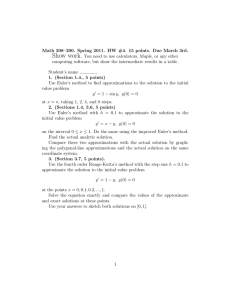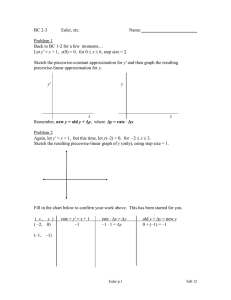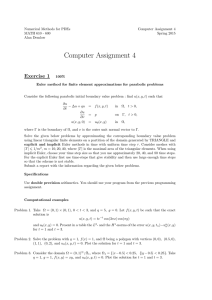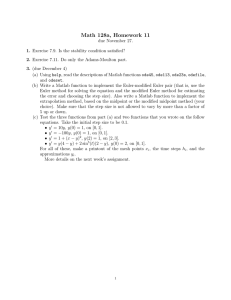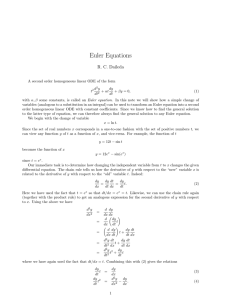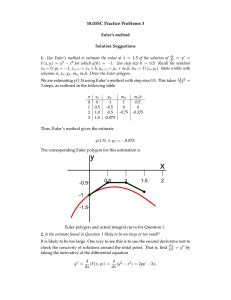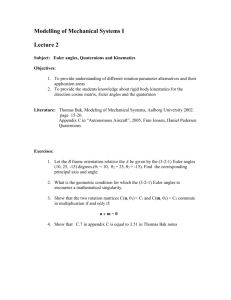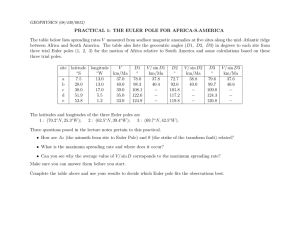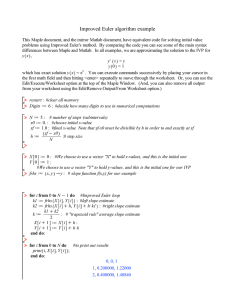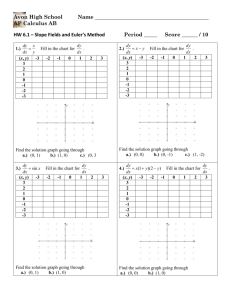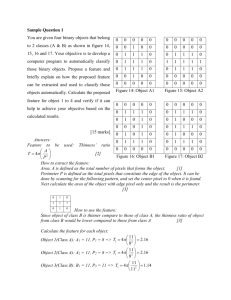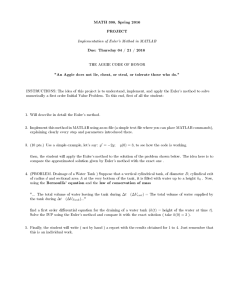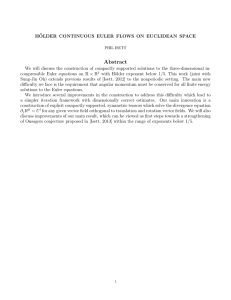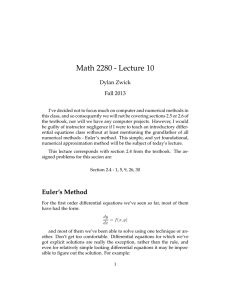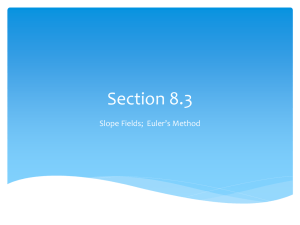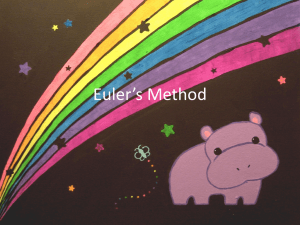Introduction to Euler`s Method
advertisement
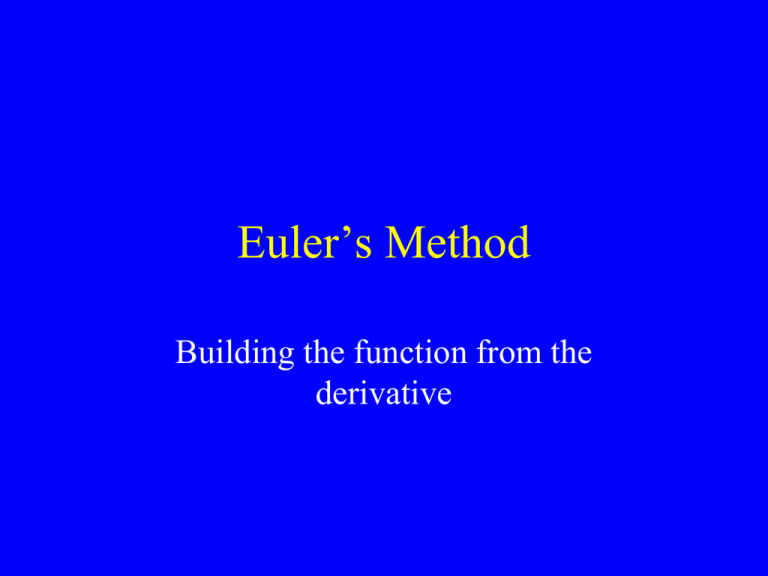
Euler’s Method Building the function from the derivative Local Linearity and Approximation ( x1 , y1 ) ( x0 x, y0 y ) ( x0 x, y0 f ( x0 )x) ( x1, y1) ( x0 x, y0 y) y f ( x0 ) x f ( x0 )x y Slope= f ( x0 ) ( x0 , y0 ) x ( x0 x, y0 ) Euler’s Method Suppose we know the value of the derivative of a function at every point and we know the value of the function at one point. We can build an approximate graph of the function using local linearity to approximate over and over again. This iterative procedure is called Euler’s Method. Here’s how it works. t Implementing Euler’s Method What’s needed to get Euler’s method started? •Well, you need a differential equation of the form: y’ = some expression in t and y •And a point (t0,y0) that lies on the graph of the solution function y = f (t). A smaller step size will lead to more accuracy, but •Finally, you need will also take more a fixed step size computations. t. New t = Old t + t New y = Old y + y = Old y + (slope at (Old t, Old y)) t For instance, if y’= sin(t2) and (1,1) lies on the graph of y =f (t), then 1000 steps of length .01 yield the following graph of the function f. This graph is the anti-derivative of sin(t2); a function which has no elementary formula! How do we accomplish this? Suppose that y’ = t sin(y) and (1,1) lies on the graph. Let t =.1. Old Point Slope at old Pt. Change in y New t New y Old t Old y y’(old t, old y) y= y’*t Old t + t Oldy + y 1 1 .8414 .08414 1.1 1.084 1.1 1.084 .9723 .09723 1.2 1.181 1.2 1.181 1.1101 .11101 1.3 1.292 New t = Old t + t New y = Old y + y = Old y + y’(Old t, Old y) t






